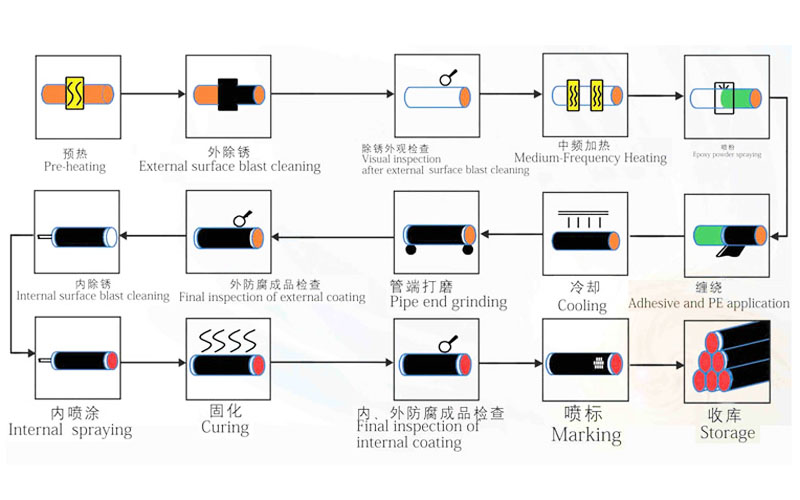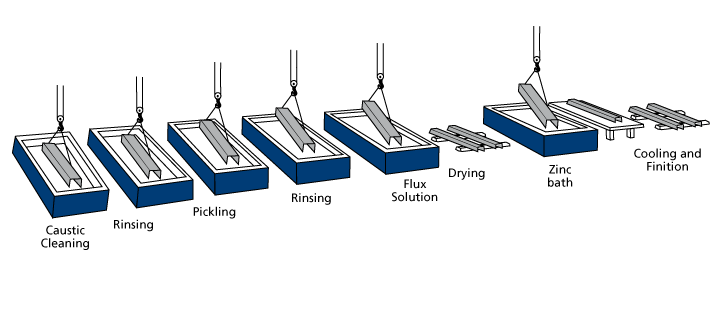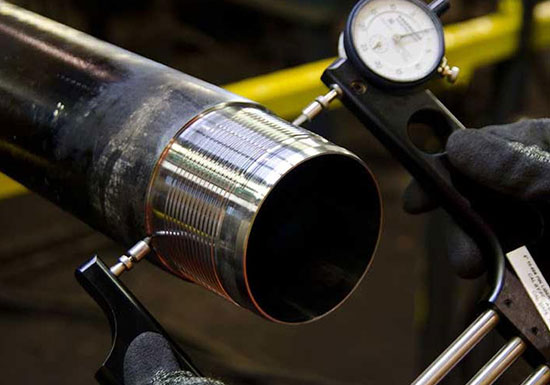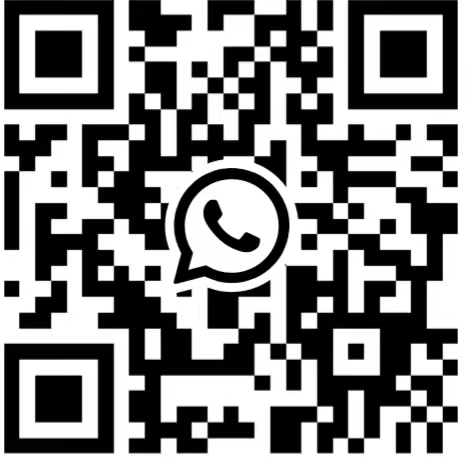Pipeline corrosion prevention refers to measures to slow down or prevent the corrosion and deterioration of pipelines under the chemical or electrochemical action of internal and external media or by the metabolic activities of microorganisms.
Why should seamless steel pipes be anticorrosive?
Seamless steel pipe is a relatively high-end steel pipe. After all, the raw material is iron, which will also rust, affecting the service life of the pipe. Therefore, anti-corrosion of seamless steel pipe is also a process that needs to be carried out before the construction of the pipeline. For seamless steel pipe Mainly used for 3pe anti-corrosion or epoxy coal tar anti-corrosion.
3PE Production Process


Zinc Coating
Zinc, a natural, healthy, and abundant element is wildly used in construction. Zinc metal has a number of characteristics that make it a well-suited corrosion protective coating for iron and steel products. Zinc’s excellent corrosion resistance in most environments accounts for its successful use as a protective coating on a variety of products and in many exposure conditions.
This proven corrosion resistance is a result of zinc’s ability to form dense, adherent corrosion by products, which leads to a rate of corrosion considerably lower than ferrous materials – 10 to 100 times slower, depending on the environment. While a fresh zinc surface is quite reactive when exposed to the atmosphere, zinc corrosion products develop rapidly on the surface as the coating is exposed to natural wet and dry cycles in the atmosphere.
Cut to Length
Before Cutting Pipe and Tubing
(1)No matter the material, measure the diameter of the pipe or tube to be cut to ensure that you use the right-size tube cutter for the job.
(2)When determining how to make a straight cut, use a tape measure and a pencil or other writing instrument to mark on the surface where you want to cut. If possible, mark around the circumference of a pipe, especially when cutting with a handsaw.
(3)Ensure that a cut is as straight as possible by securing the pipe with a vise, clamp, miter box or even duct tape to keep the length from shifting out of place while cutting.
Cutting Ways

Many factors are involved in choosing a particular method or technology for cutting tube or pipe. The basic factors that affect the cut are the tube or pipe material, wall thickness, squareness of ends, end-conditioning requirements, and secondary process requirements.Other factors that play a role include production volume, cutting efficiency, overhead costs, and special requirements of the tube or pipe material.
(1)Abrasive Cutting
Abrasive sawing is a basic, manual method of cutting-to-length product to the customer’s specification in any alloy.
(2)Band Saw Cutting
Band saw cutting is a fully automatic process and the most common method for cutting rod, bar, pipe, and tubing. This process is excellent for large-volume cutting. Some band saws can handle large product bundles.
(3)Cold Sawing
High-precision cold sawing is suitable for cutting smaller-diameter or thin-walled material that requires tight tolerances. A circular cold saw uses a wheel blade and cutting fluid, which usually is applied with a mist lubricator.
(4)Laser Cutting
Despite the high capital cost, a laser cutting system provides a range of capabilities and associated advantages. Easily controlled with automation equipment (CNC), a laser allows an operator to cut, deburr, inspect, and even pack material while the laser runs continuously.
(5)Lathe Cutting
Lathe cutting is ideal for thin-walled material, producing square cut ends with minimum burr. Multiple cross slides permit deburring orchamfering the OD of both ends during the lathe cutting process.
(6)Shearing
A tube shear is a completely automatic, high-speed machine that uses two shearing plates and two ID punches under extreme pressure to cut tubing. The shearing action is the same for all sizes and wall thicknesses with maximum limits.
THREADING
Common pipe thread types:
1.NPT or NPS (national pipe tapered or straight): Most common in North America
2.MIP or FIP (male or female iron pipe): Same thread dimensions as NPT
3.BSP(T) or BSP(S) (British standard pipe tapered or straight): Most common in Europe
4.Compression: A unique threaded fitting that does not mate with other thread types
5.UNS (National Unified Special): Some compatible with compression fittings

What are the parts of a pipe thread?
1.The thread dimension refers to the major diameter or outside measurement.
2.The pitch is the distance from the peak of one crest to the opposite of another.
3.The thread angle is the difference between the threads or the valley between the peaks.
Contact: Mr. Rao
Phone: +86-153 0846 7103
Tel: +86 731 8504-7708
Email: info@jinxi-steel.com
Add: No. 568,Chuanggu Industrial Park, Queyuan Road, Tianxin District, Changsha City, Hunan Province, P.R.China.
Whasapp
